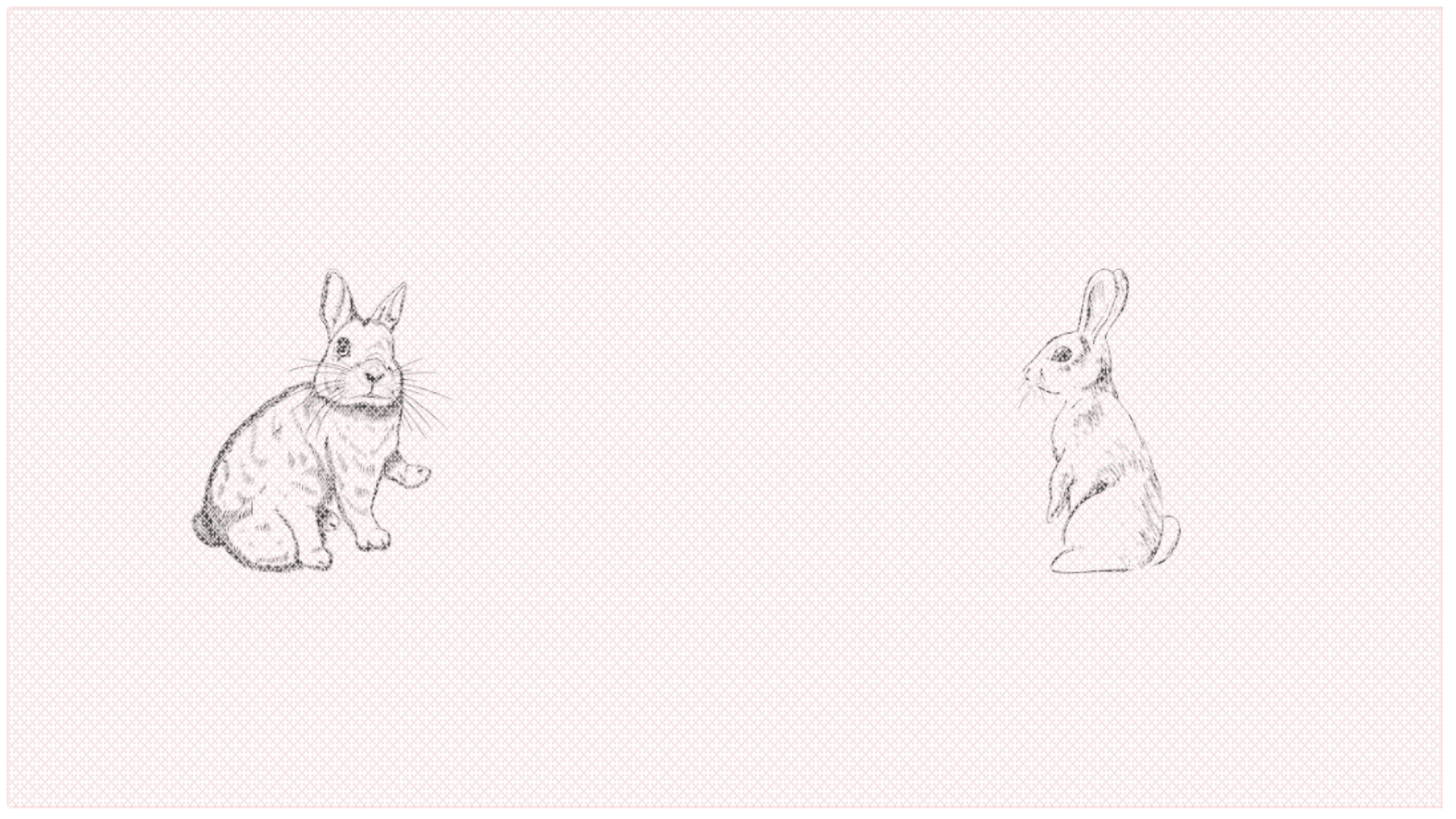
Learning from Mistakes
We tried our hand at making new rabbit tractors due to the buildup of rabbit manure in the corner of the tractor.
Peggy
6/26/2024
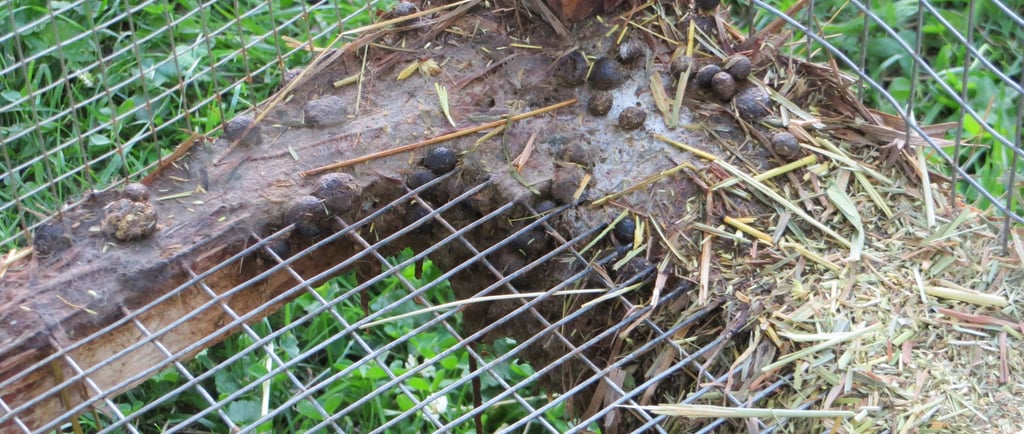

Wire needs to go on the inside of the wood
If you don't want your rabbit tractor looking like the picture above, you need to construct it so that the wire is on the inside of the wood. When six rabbits use the same corner for their "bathroom," it is impossible to keep things clean and looking good.
Also, whoever said that having a rabbit tractor and putting your rabbits on your lawn was good for the lawn either moved their tractor multiple times a day, or they are talking about one bunny in the tractor. Moving the tractor only once or twice a day leads to many dead spots in the lawn. The poop may be good fertilizer and help the lawn to grow, but six rabbits peeing on the lawn in the same corner for 12-24 hours ruins the lawn. Our lawn definitely looks worse for ware with the rabbits being on the lawn in the tractor.
For these reasons, we decided to come up with a plan for a new rabbit hutch and found a place in the garden to put more cages.
We were hoping to get by with just the one tractor, but as it became close to the time to move Ginger's litter into the tractor, we realized that we really needed another spot. Partly because we were worried about mixing the litters together and partly because almost all of our baby bunnies are girls, so we would have a very crowded girl cage and a very spacious boy cage if we split them by gender.
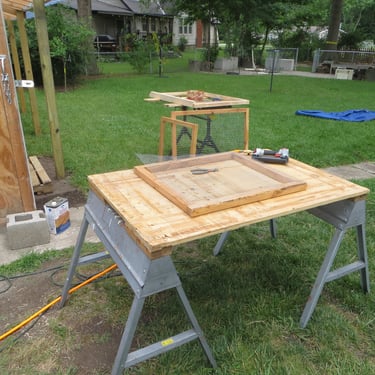
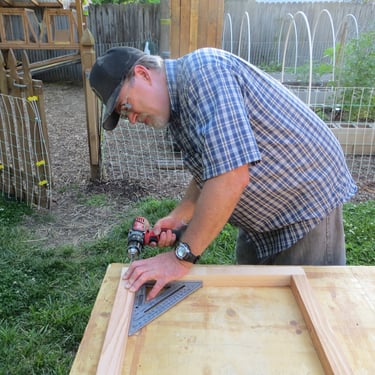
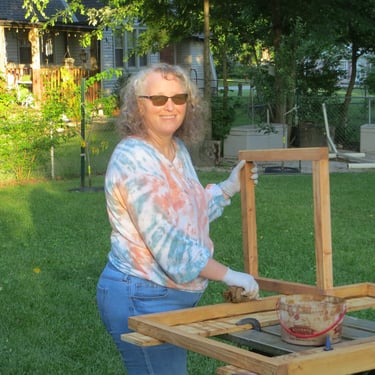
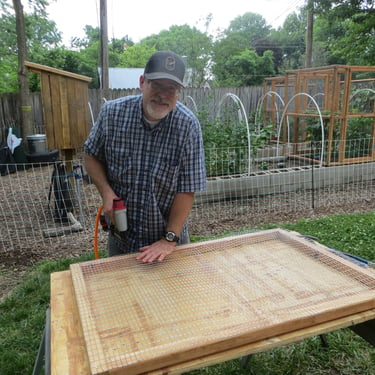
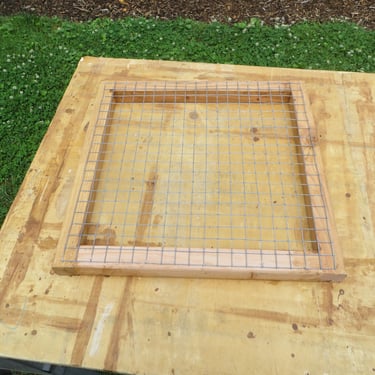
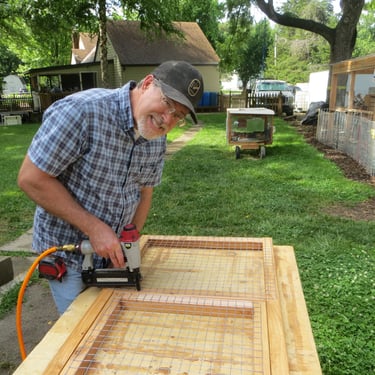
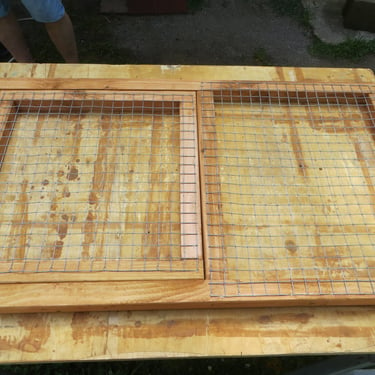
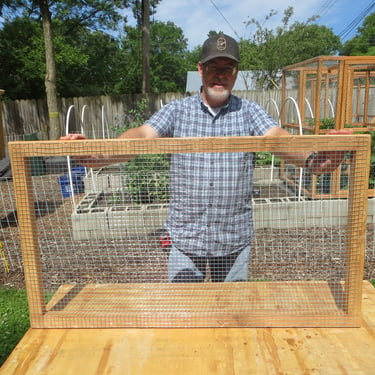
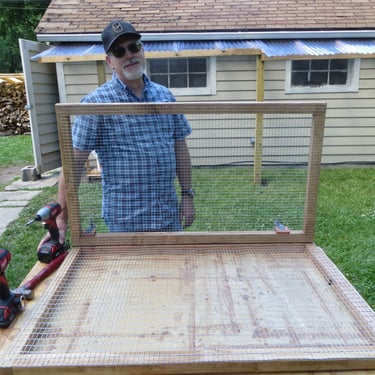
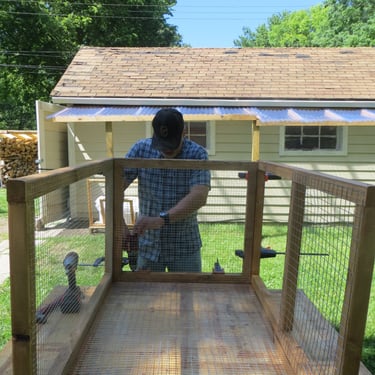
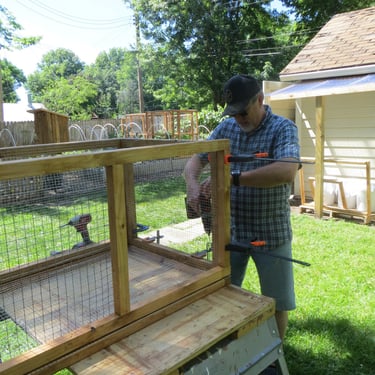
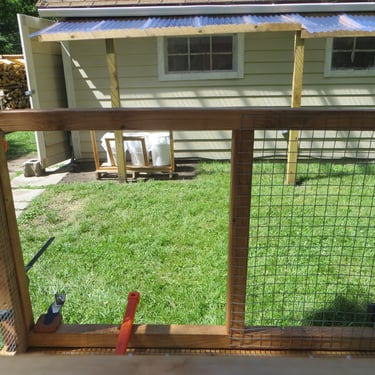
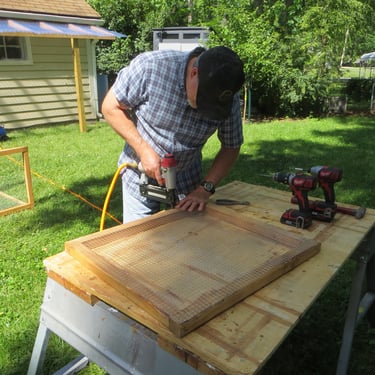
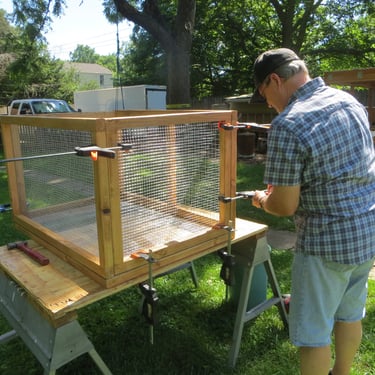
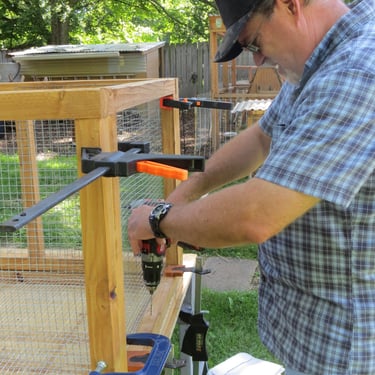
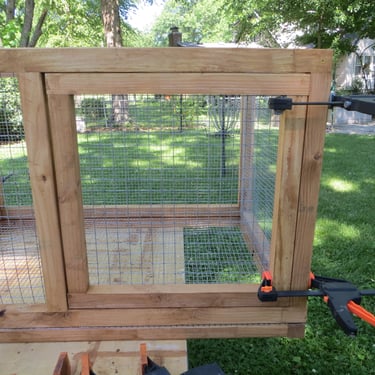
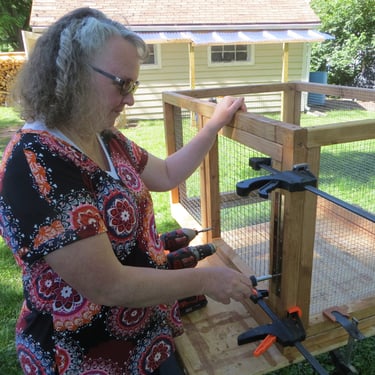
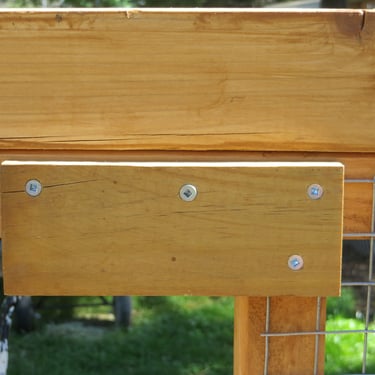
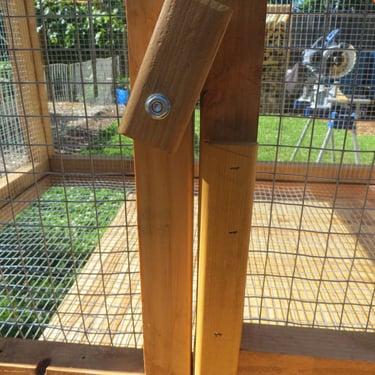
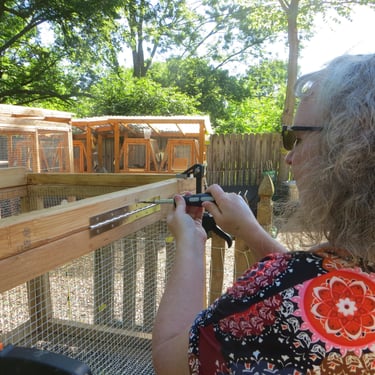
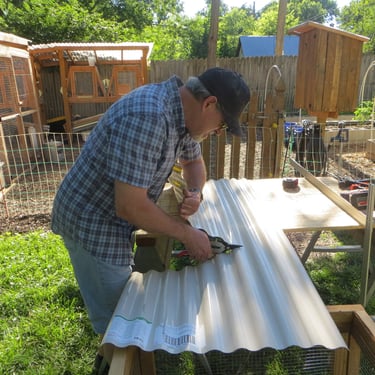
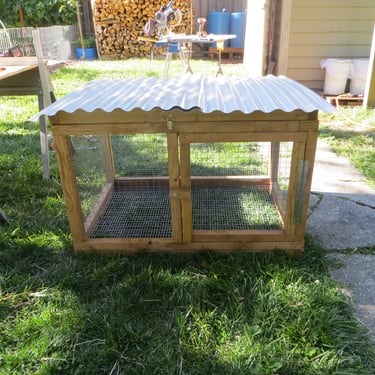
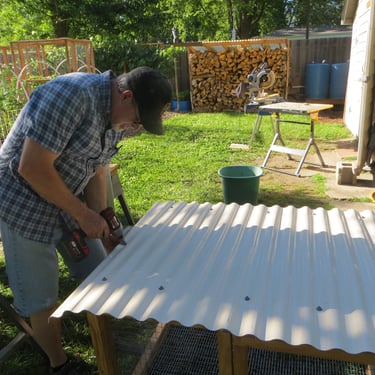
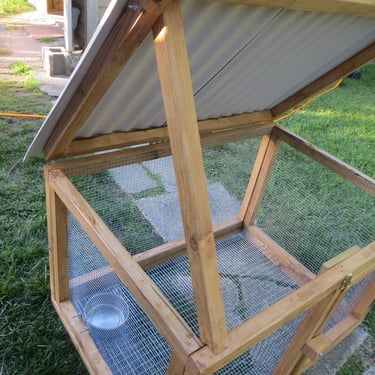
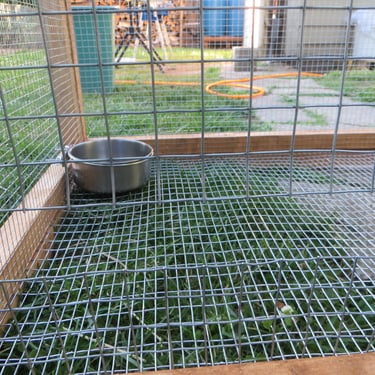
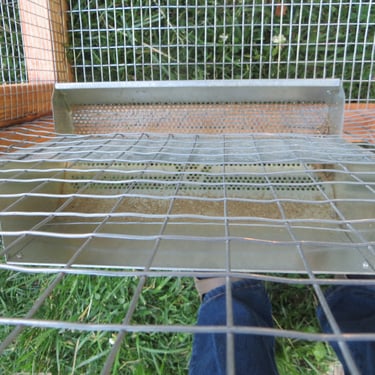
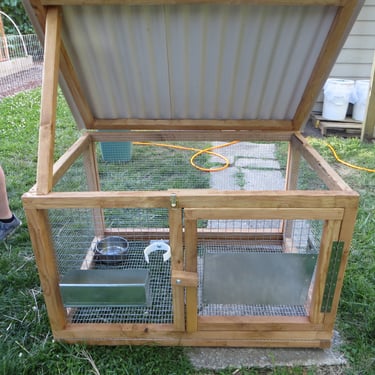
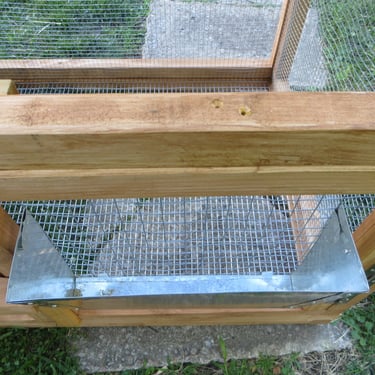
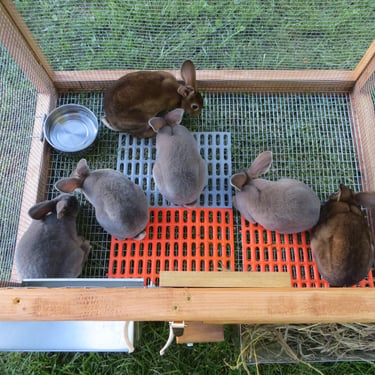
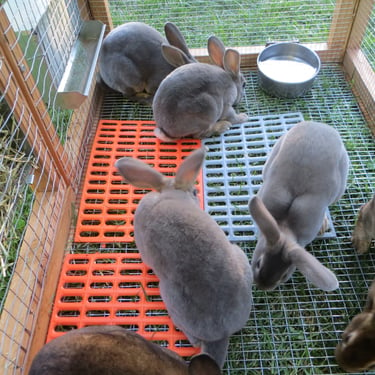
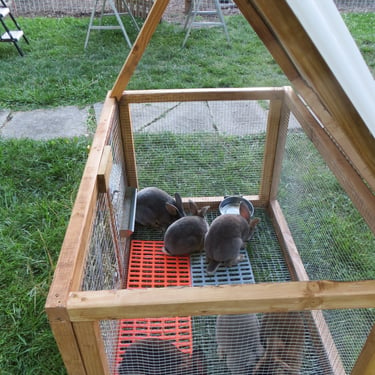
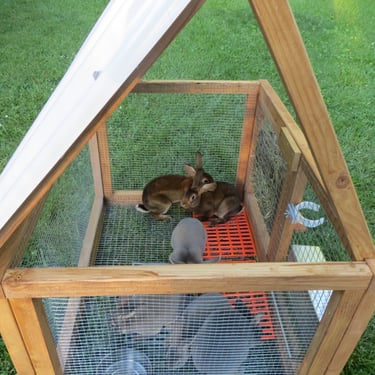
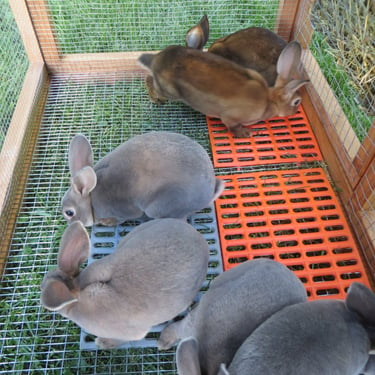
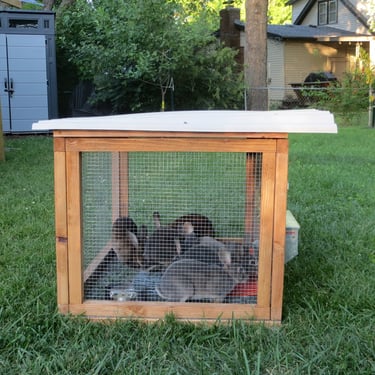

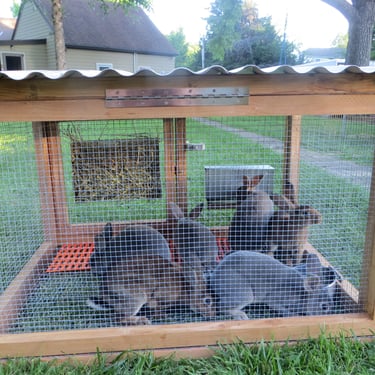
The First New Rabbit Hutch/Tractor
We built the new cage, so that the wood is on the outside of the wire. We also build it so that the rabbits can be accessed from the top, when used as a tractor and accessed from the side when used as a hutch. We put Parsley's litter into this first new cage, as they were in the dirtier side of the old rabbit tractor.
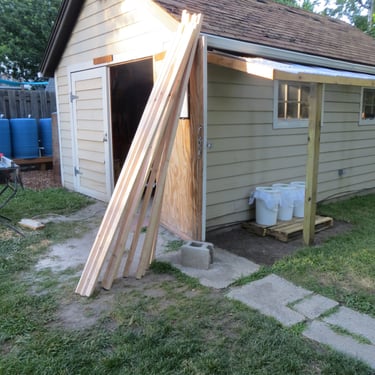
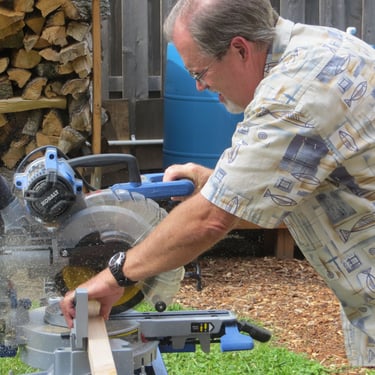
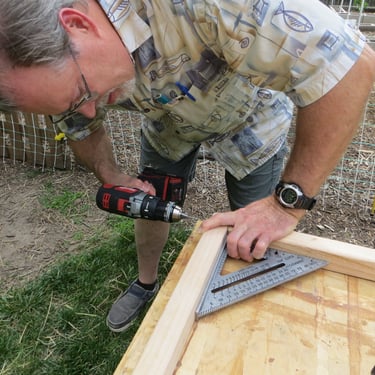
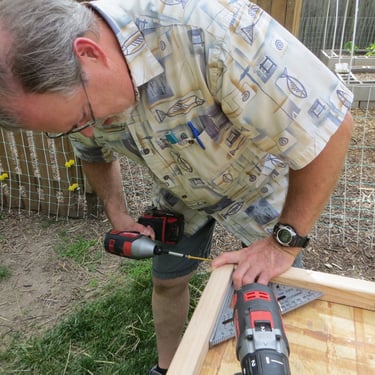
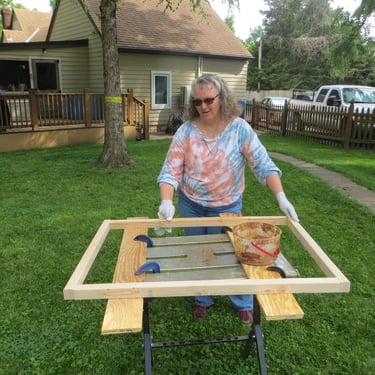
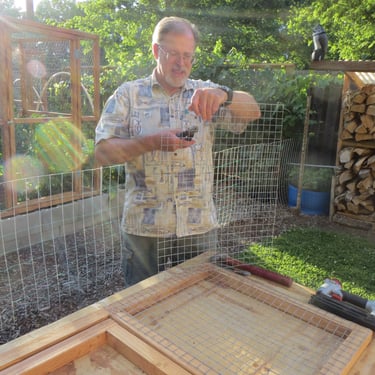
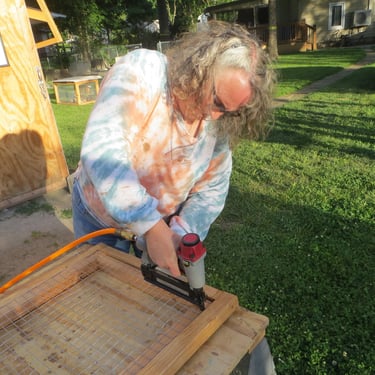
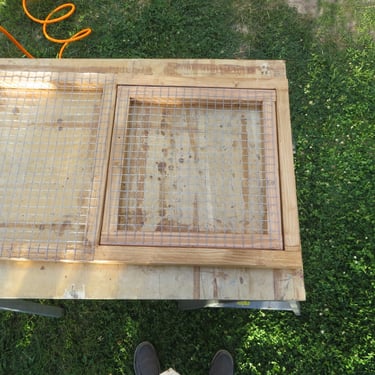
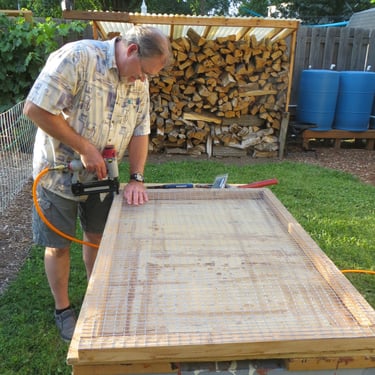
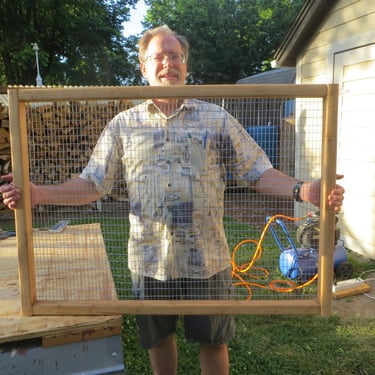
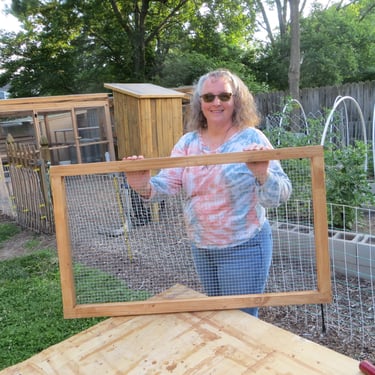
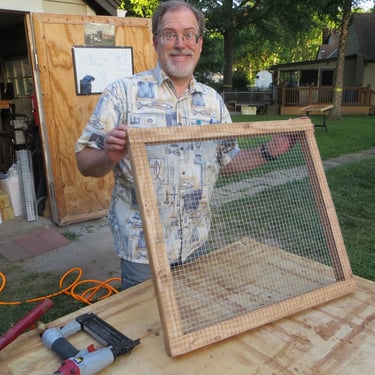
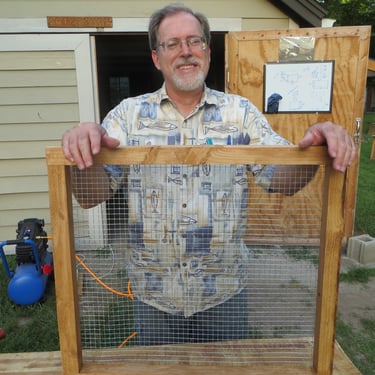
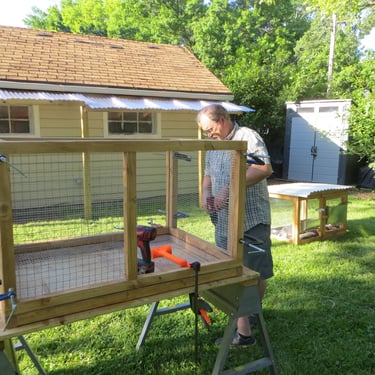
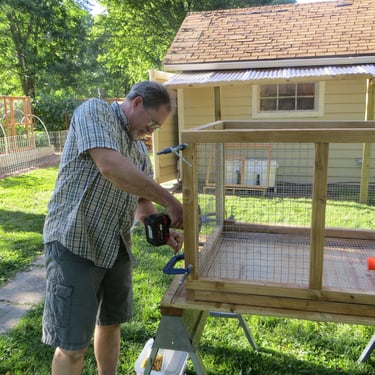
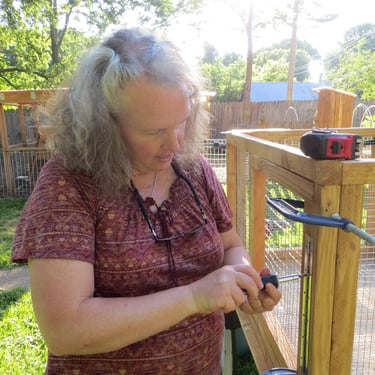
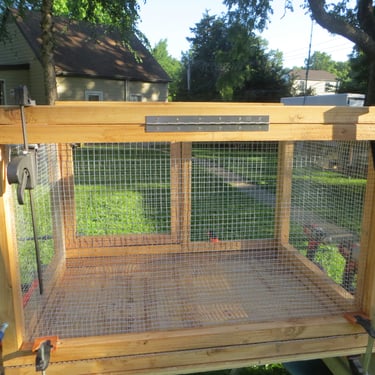
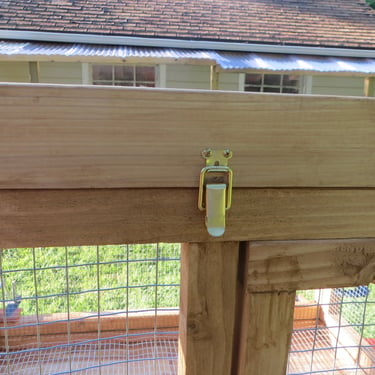
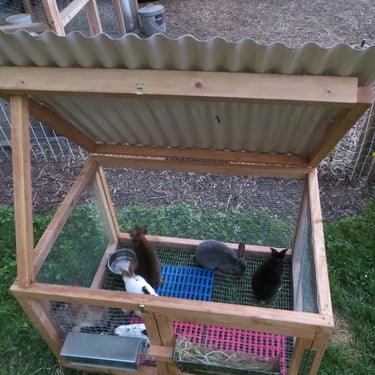
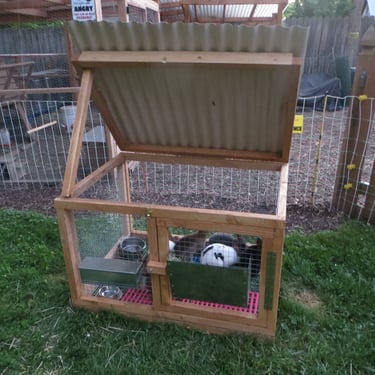
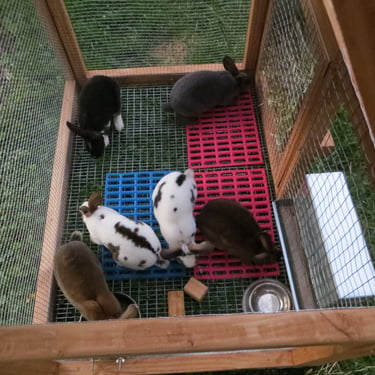
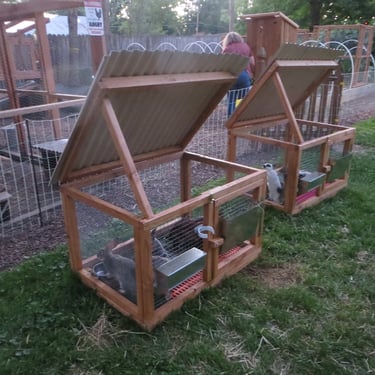
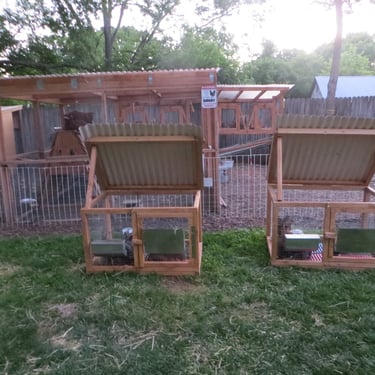
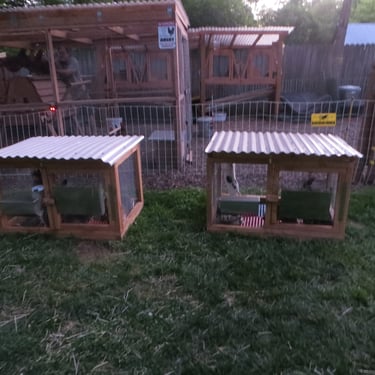
The Second New Rabbit Hutch/Tractor
We made a few adjustments to the second tractor, in hopes of getting the "blueprint perfect." Of course, when we planned to rotate the boards on the bottom board we forgot that it changed the length a little bit, so it is slightly shorter than the first one. Maybe by the time we make the 3rd or 4th one, we will feel like we really have it down and can make a detailed plan that others could follow if they would like a hutch/tractor like ours.
We put Clove's litter in the second cage. At this point we were still planning on having them be tractors, so we used the 16 gauge wire on the bottom. It seems to be holding up fine, but now that we have decided to put them on a stand and use them as hutches, we have purchased the 14 gauge wire for the bottom of the next two cages we plan to make.
Remaking the Original Tractor
After we got the cages made for Parsley's and Cloves litters, we were in a hurry to get a spot to move Ginger's litter into. We took apart the old tractor and repurposed the wood and wire as much as we could to make a new smaller tractor. The dimensions wouldn't accommodate making it like the other cages very easily, so we made this one approximately 36x36.
This cage will always function as a tractor, but this time, we put the wheels onto the back so that the rabbits will be on the ground. The lady we bought our rabbits from said that she never puts her rabbits on the ground, so we made our first tractor raised. We have no idea which method is best, but we know that a lot of people do put their rabbits on the ground, so we decided to try it that way this time. But again, we have the wrong wire for the bottom of the cage if you really want them to be able to get at a lot of grass to supplement their feed.

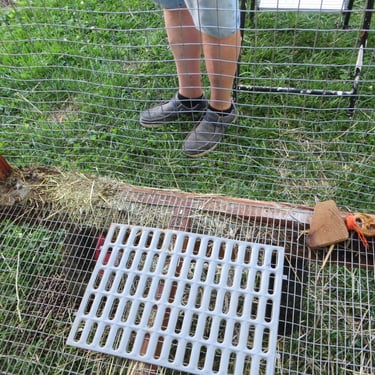
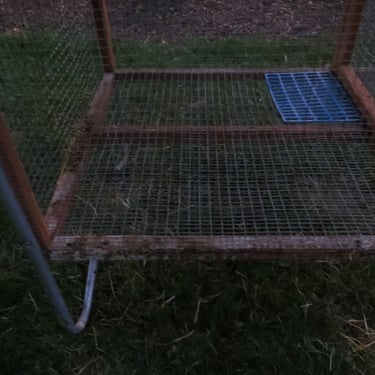
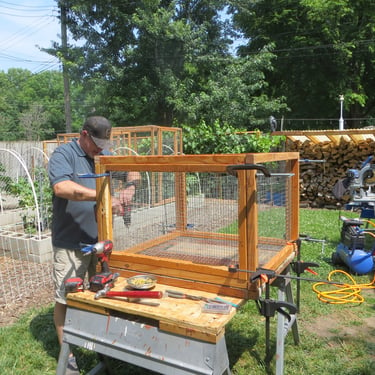
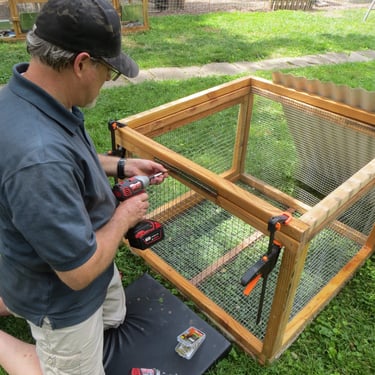
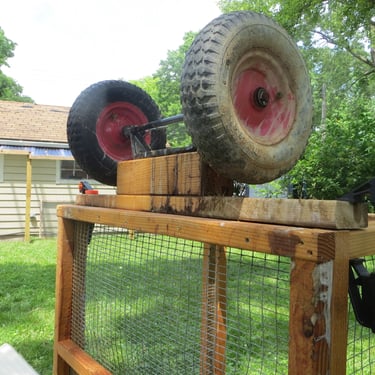
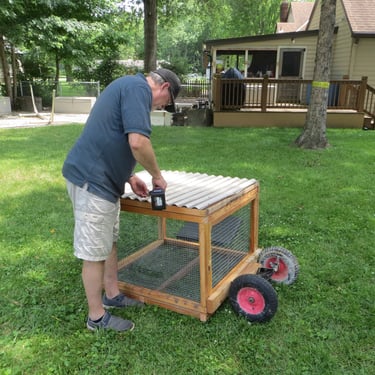
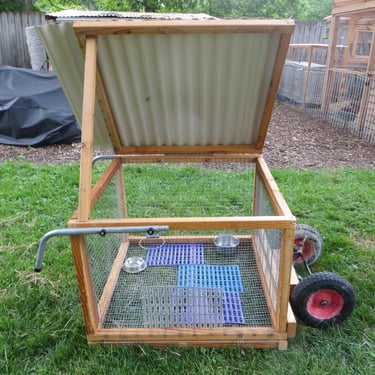
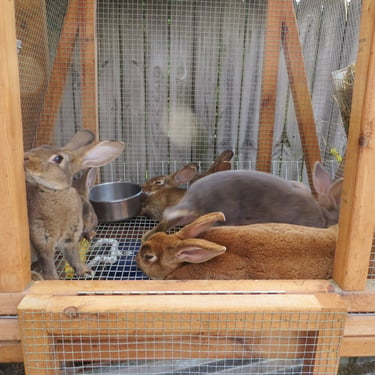
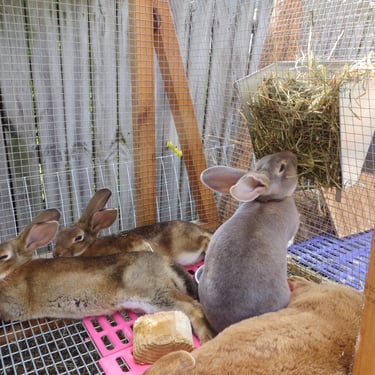
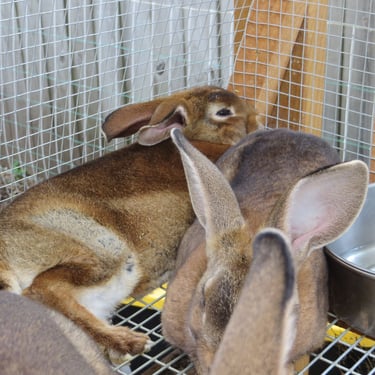
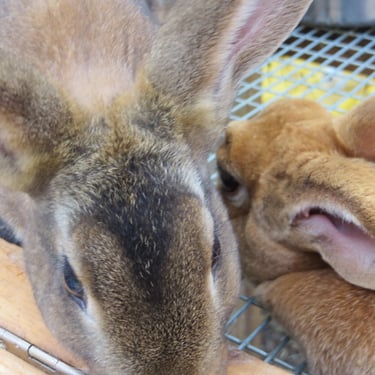
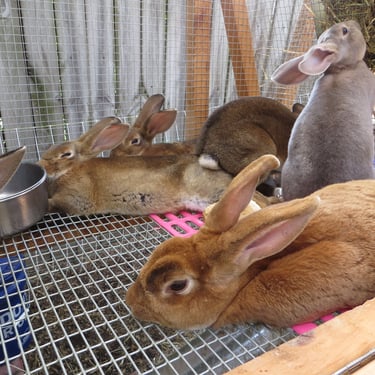
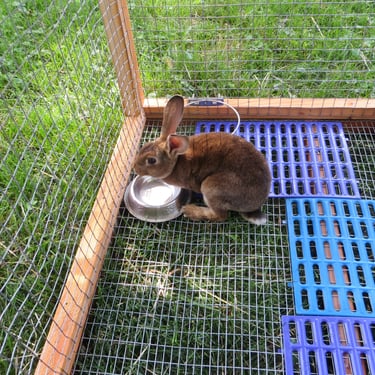
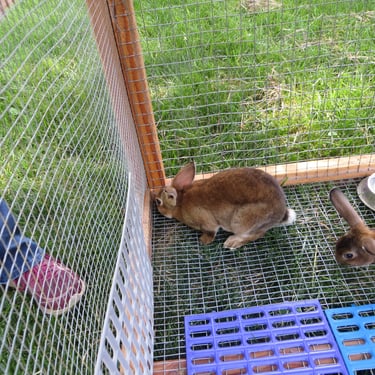
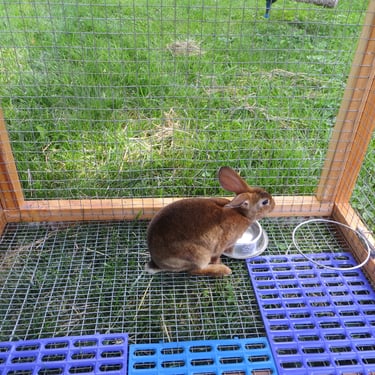
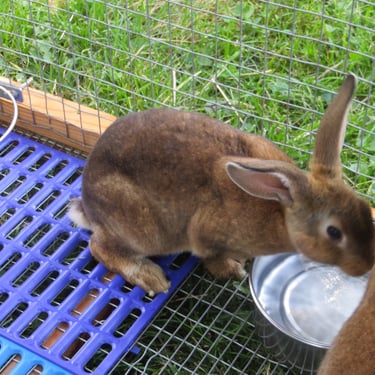
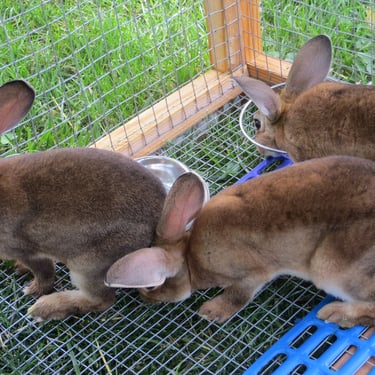
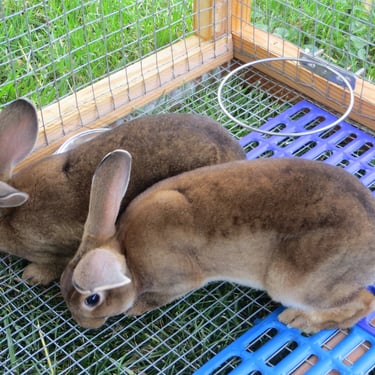
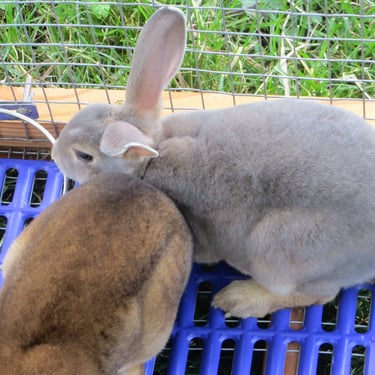
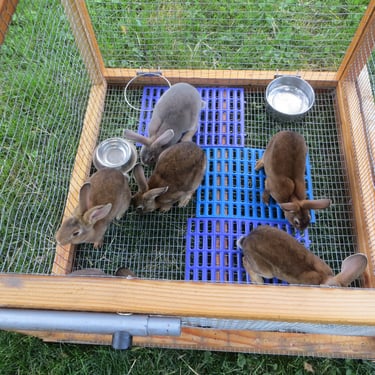
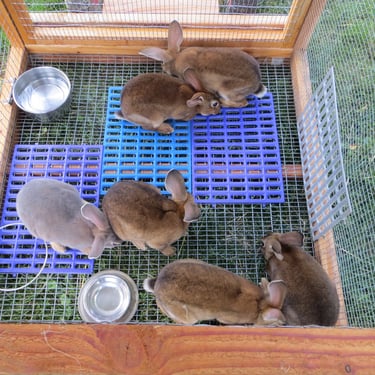
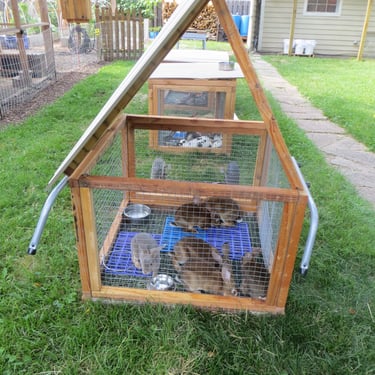
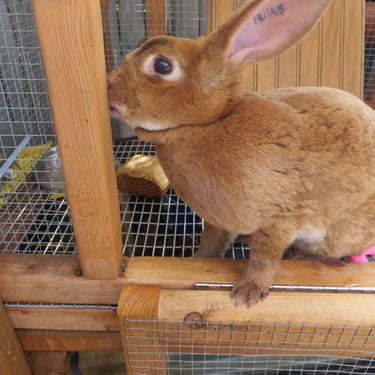
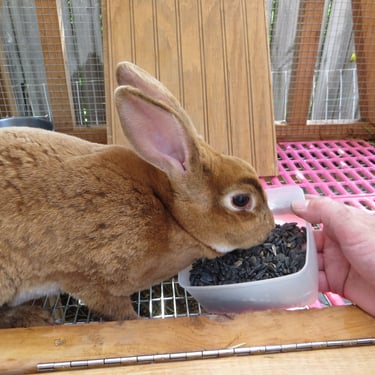
After we got the tractor built, we took a few pictures of Ginger with her litter and then transferred the babies to the tractor. Then we trimmed Ginger's nails, cleaned her hutch, got her lean-to put up, and gave her a treat of sunflower seeds.
The Stand for the New Rabbit Hutch
Our new rabbit hutch/tractors seem to work pretty well. They are light enough that one person can move them around the yard by dragging them, but really need wheels put on them to make that feasible for one person on a daily basis.
The rabbits seem to like eating the grass and the clover, but if you are planning on using these as tractors permanently, then we would suggest having bigger openings in the wire on the bottom of the cage, so that they have access to more grass. Also, move them around several times a day or don't have more than one or two rabbits in them, as their urine does harm the grass more than the manure helps the grass.
We were concerned about moving the tractors around the yard during the winter-time, so for that reason and the reasons mentioned above, we decided to make a stand and use the cages as a hutch rather than a tractor. So, we have not yet formulated a plan for putting wheels on the cages for easy relocation. However, if we do put wheels in the future, we will have to find a way to put them on the back of the cage, so that they hang off the back of the stand, as we do not have any more room in our yard to go longer. Your space and preferences will dictate how you would like to handle the wheels.
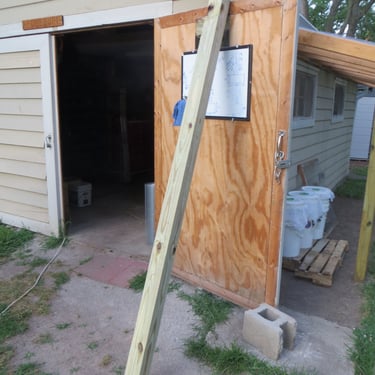

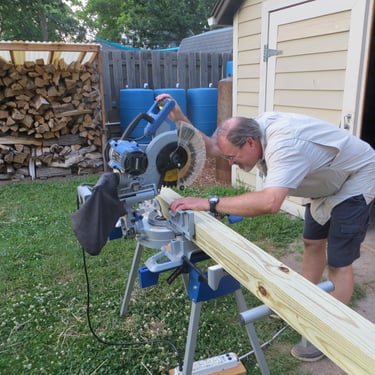
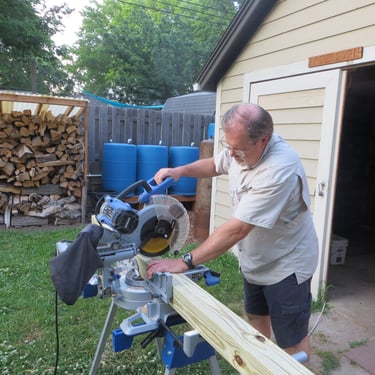
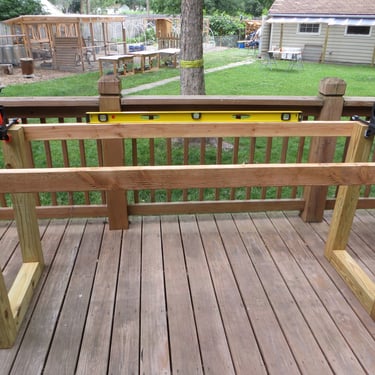
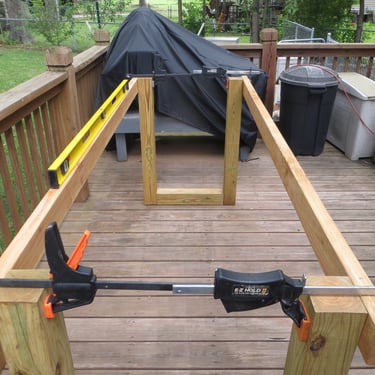
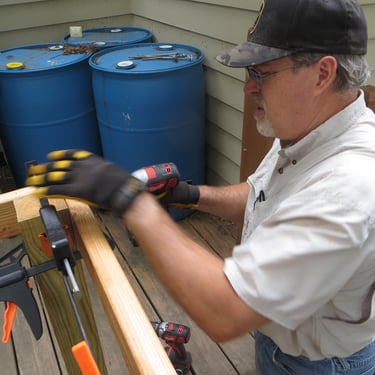
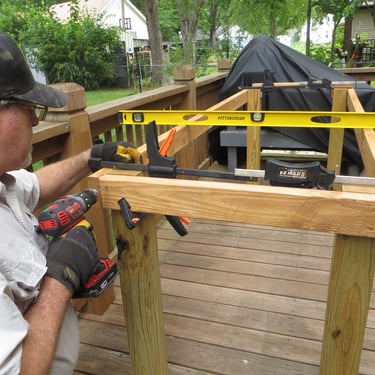
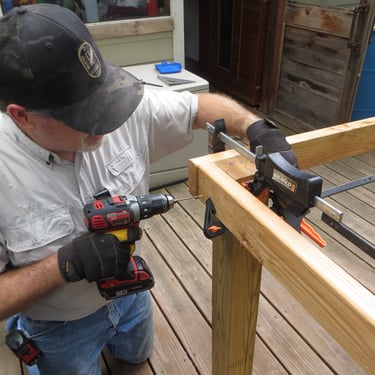
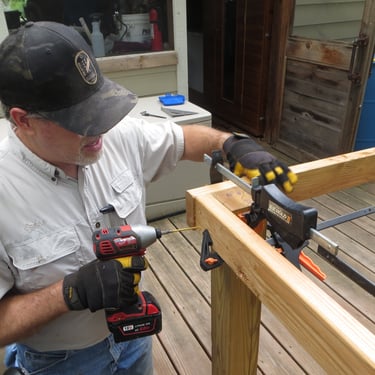
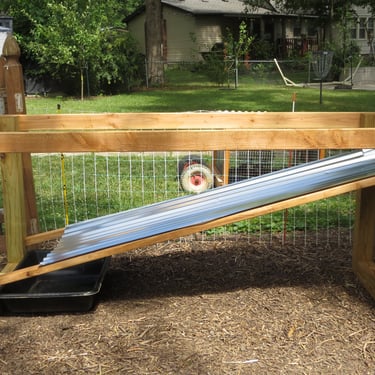
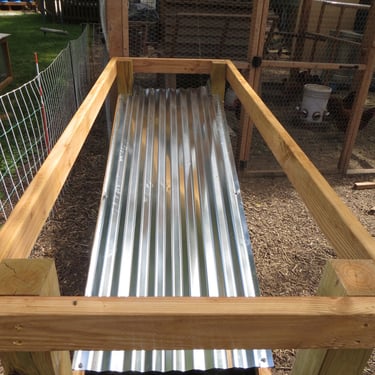
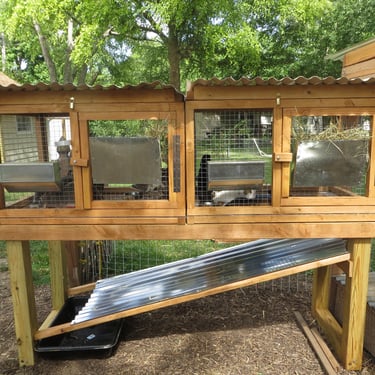
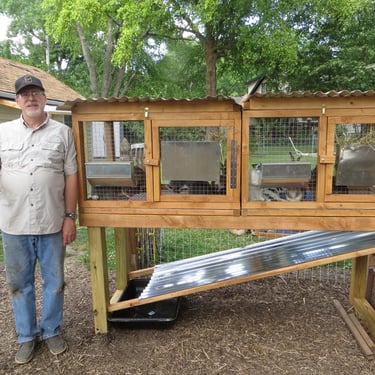
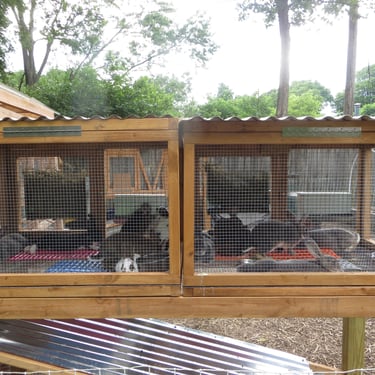
Rabbit Hutch/Tractor 1
Rabbit Hutch/Tractor 2
Rabbit Hutch Stand
